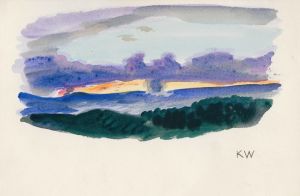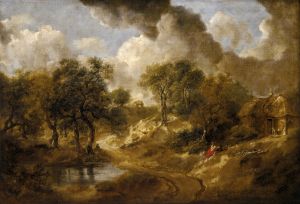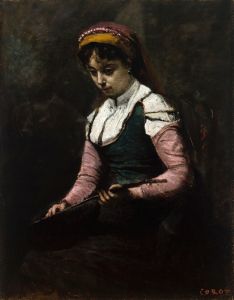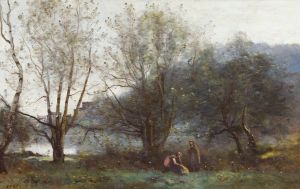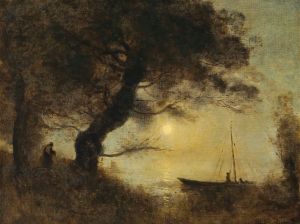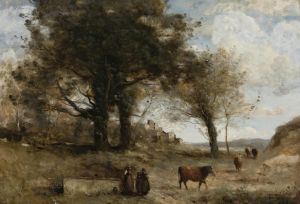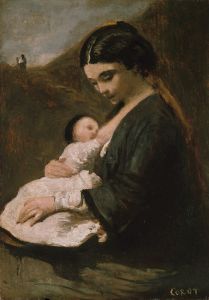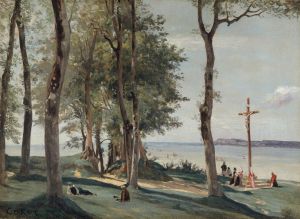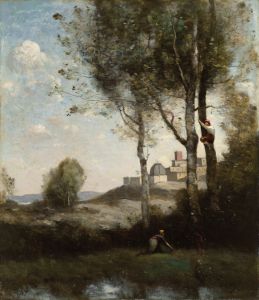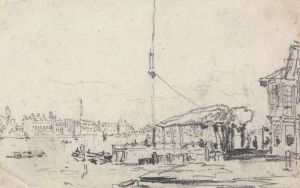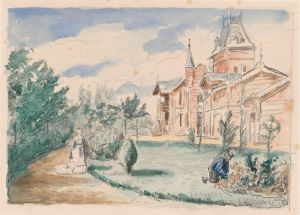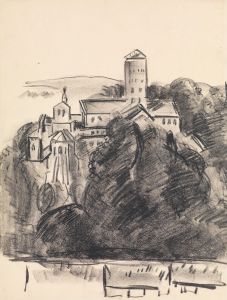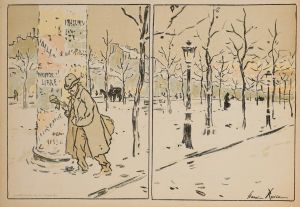
Honfleur
A hand-painted replica of Jean-Baptiste-Camille Corot’s masterpiece Honfleur, meticulously crafted by professional artists to capture the true essence of the original. Each piece is created with museum-quality canvas and rare mineral pigments, carefully painted by experienced artists with delicate brushstrokes and rich, layered colors to perfectly recreate the texture of the original artwork. Unlike machine-printed reproductions, this hand-painted version brings the painting to life, infused with the artist’s emotions and skill in every stroke. Whether for personal collection or home decoration, it instantly elevates the artistic atmosphere of any space.
Jean-Baptiste-Camille Corot was a pivotal figure in landscape painting during the 19th century, known for his contributions to the Barbizon School and his influence on the Impressionist movement. One of his notable works is "Honfleur," a painting that captures the serene beauty of the French town of Honfleur, located in the Normandy region. This painting is a testament to Corot's skill in rendering natural light and atmosphere, elements that became hallmarks of his style.
Corot was born in Paris in 1796 and began his artistic career relatively late, after working in the family business. He studied under Achille-Etna Michallon and Jean-Victor Bertin, both of whom were proponents of the Neoclassical tradition. However, Corot's work gradually evolved to embrace a more naturalistic approach, focusing on the effects of light and the subtleties of the natural environment.
The town of Honfleur, with its picturesque harbor and surrounding countryside, was a popular destination for artists seeking inspiration from nature. Corot visited Honfleur several times during his career, and the town's scenic vistas provided ample material for his landscapes. "Honfleur" is one such painting that reflects Corot's ability to capture the tranquil essence of the locale.
In "Honfleur," Corot employs a soft, muted palette, characteristic of his mature style. The painting likely depicts the harbor area, with its calm waters and the gentle play of light on the surface. Corot's brushwork is delicate and fluid, creating a sense of harmony and balance within the composition. The use of light is particularly noteworthy; Corot was adept at depicting the changing effects of light and shadow, lending his landscapes a sense of immediacy and realism.
Corot's approach to painting was methodical yet intuitive. He often worked en plein air, directly observing and sketching his subjects outdoors before completing the paintings in his studio. This practice allowed him to capture the transient qualities of light and atmosphere with great fidelity. In "Honfleur," this method is evident in the way the light interacts with the landscape, creating a serene and contemplative mood.
Throughout his career, Corot's work was celebrated for its poetic quality and technical mastery. He was a bridge between the Neoclassical tradition and the emerging Impressionist movement, influencing artists such as Claude Monet and Camille Pissarro. Corot's landscapes, including "Honfleur," are appreciated for their ability to evoke emotion and convey the beauty of the natural world.
"Honfleur" exemplifies Corot's contribution to the development of landscape painting. His ability to capture the essence of a place with simplicity and grace has left a lasting impact on the art world. Today, Corot's works are held in high esteem, and "Honfleur" remains a cherished example of his artistic legacy. The painting is housed in various collections, reflecting its enduring appeal and significance in the history of art.
In summary, Jean-Baptiste-Camille Corot's "Honfleur" is a masterful representation of the artist's skill in capturing the natural beauty and tranquil atmosphere of the French town. Through his nuanced use of light and composition, Corot created a work that continues to resonate with audiences, highlighting his pivotal role in the evolution of landscape painting.






